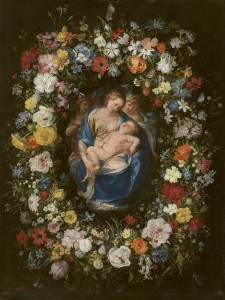The European Visual Culture Seminar was established in 1993 by David Marshall as the ‘Baroque Group’ with staff and students from the Art History department of the University of Melbourne. Over the years it has broadened its focus to include any aspect of European visual culture, though with a particular focus on the early-Modern period. It welcomes staff and students from Melbourne University, La Trobe University and other academic institutions as gallery curators and interested members of the public.
The range of research interests is extremely wide and reflects the diversity of European art history, from the Middle Ages to the 20th century. Subjects include – but are not limited to – patronage, portraiture, landscapes and frescoes, architectural and garden history, issues of attribution and discussions of theory.
The EVCS prides itself on its approachable culture that encourages extended discussion of papers in an informal, friendly and supportive environment, in which speakers can share their research and obtain thoughtful and in-depth feedback.
The seminars take place once a month during semester, usually on a Monday evening at 6.30 pm, currrently in Room 205, Old Arts Building, University of Melbourne, Parkville. Click here for a map.
The EVCS is open to staff and students of all academic institutions, as well as interested members of the public.
If you would like to be added to the email list to receive information on upcoming seminars click here. If you are interested in giving a paper, please contact the convenor, Mark Shepheard, by email.
Convenor
Co-Convenor
Forthcoming Papers
 Monday 25 November, 6:30pm
Monday 25 November, 6:30pm
Angelo Lo Conte, Landscapes & Garlands of Flowers: an example of naturalistic Lombard devotion.
This paper explores the invention and the development of the garland of flowers in European art, characterizing it as an example of mutual synergy between Italian philosophy and Flemish art. During the second half of the sixteenth century, Christian philosophy was strongly influenced by figures such as Filippo Neri, Agostino Valier and Federico Borromeo, who introduced a second wave of Counter-Reformational thought based on an innovative, optimistic idea of the world and of mankind’s role in it. According to this interpretation, all created things, animate and inanimate, had a positive value. Nature was thus seen as a manifestation of God’s goodness, and contemplation of nature became a way to establish a spiritual connection with God. Federico Borromeo, Archbishop of Milan, explored this philosophical approach in the creation of his private art collection, which included a selection of forty landscapes, painted by the most important Flemish masters of the time. Prominent among these paintings is the first example of a new type of devotional iconography: the Madonna set within a garland of flowers, a mixed genre created in collaboration between Federico Borromeo and Jan Brueghel the Elder, in which human figures are combined with both landscape and still-life elements.
This new iconography was particularly popular in Lombardy, Flanders and Spain, where it was further developed. In Milan, Carlo Antonio Procaccini replaced the central Holy Family with devotional landscapes. In Flanders, the genre was adopted by painters such Jan Brueghel the Younger, Frans Snyders and Daniel Seghers, who enriched the garland with cartouches, refined stones and other decorative elements. In Spain, the iconography was especially appreciated in Castile, reflecting the interest of local collectors in both Italian and Flemish art. The spread of this new genre across Europe highlights the important role played by Federico Borromeo in the development of seventeenth-century art and draws attention to the mutual influences between Lombard and Flemish art.
For a list of Past Papers click here.

